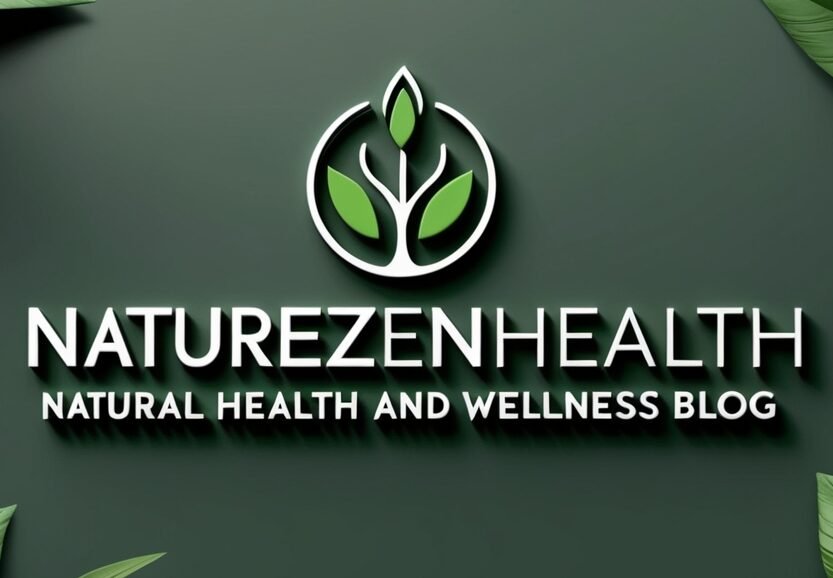High blood pressure, or hypertension, is a big health problem worldwide. It’s important to manage it well to avoid serious heart issues. Mindfulness practices are now seen as a helpful addition to usual treatments.
Breathing exercises and meditation techniques are key in lowering blood pressure naturally. Adding these to your daily life can help boost your heart health. Research shows that regular mindfulness can lower blood pressure.
Key Takeaways
- Mindfulness practices can complement traditional hypertension treatments.
- Breathing exercises and meditation can help reduce blood pressure.
- Regular practice can lead to improved cardiovascular health.
- Incorporating mindfulness into daily routines is beneficial.
- Natural methods can support traditional blood pressure management.
Understanding Blood Pressure and Hypertension
Knowing about blood pressure is key to keeping your heart healthy. It shows how hard blood pushes against artery walls as the heart pumps it. This is important for your overall health.
What is Blood Pressure?
Blood pressure is measured in millimeters of mercury (mmHg). It’s shown as two numbers: systolic (top number) and diastolic (bottom number). A normal reading is about 120/80 mmHg. High blood pressure, or hypertension, is when it’s over 130/80 mmHg.
Hypertension is a big risk for heart problems, like heart attacks and strokes. It’s also linked to kidney disease. Knowing how hypertension works helps in managing it.
The Mechanics of Hypertension
Hypertension happens when blood vessels narrow or get stiff. This makes the heart work harder. It can damage blood vessels and organs like the heart and kidneys.
The renin-angiotensin-aldosterone system (RAAS) plays a big role. It controls blood pressure by changing how blood vessels work and how much fluid is in the body.
“High blood pressure is a major risk factor for cardiovascular disease, and managing it through lifestyle changes and relaxation techniques can significantly reduce this risk.”
Common Causes of High Blood Pressure
Many things can lead to high blood pressure. These include genetics, age, lifestyle, and other health issues. Some common causes are:
- Family history of hypertension
- Age over 40
- Being overweight or obese
- Not being active enough
- Eating too much salt
- Drinking too much alcohol
- Stress
| Cause | Description | Impact on Blood Pressure |
|---|---|---|
| Genetics | Family history of hypertension | Increases risk |
| Age | Risk increases with age | Higher likelihood of developing hypertension |
| Lifestyle | Physical inactivity, diet high in salt | Contributes to high blood pressure |
Knowing why hypertension happens is key to managing it. This includes using relaxation techniques and making lifestyle changes.
The Role of Meditation in Health
Meditation, rooted in ancient traditions, is now a key tool for better health. It helps people focus on the present and understand themselves better. This can lead to improved health.
Historical Context of Meditation
Meditation has been around for thousands of years. It was used in spiritual ways to connect with a higher power or find enlightenment. Today, it’s known to help with reducing stress and anxiety, improving sleep, and boosting heart health.
Its history is diverse, with different cultures having their own meditation styles. From Buddhist mindfulness to Transcendental Meditation, each has its own benefits. Knowing this history helps us see how meditation can tackle modern health issues, like hypertension.
Meditation’s Impact on the Mind and Body
Meditation deeply affects both the mind and body. It lowers blood pressure and improves heart health by reducing stress. Regular guided meditation for blood pressure can greatly help those with high blood pressure.
It also makes the mind clearer, reducing anxiety and depression. This clarity can lead to healthier choices, like better eating and more exercise. Adding mindfulness practices for lowering BP to daily life can greatly improve health.
How Meditation Lowers Blood Pressure
Meditation is a powerful tool for managing high blood pressure. It offers a natural way to lower blood pressure. Meditation reduces stress and promotes relaxation, helping to fight high blood pressure.
Stress Reduction and Its Effects
Stress is a big factor in high blood pressure. When we’re stressed, our body’s “fight or flight” response kicks in. This increases our heart rate and blood pressure.
Meditation counters this response by making us relax and reducing stress. Regular meditation lowers stress hormones like cortisol. This leads to a calmer state.
Deep breathing in meditation also helps reduce stress. Deep breathing techniques for hypertension slow down our heart rate and relax us. This is great for people with high blood pressure, as it lowers their stress response and blood pressure.
The Science Behind Meditation and Blood Flow
Meditation affects blood pressure through several ways. It improves blood flow and reduces inflammation, which is good for our heart. Controlled breathing for blood pressure regulation is a key part of meditation. It helps regulate our heart rate and improve blood vessel function, lowering blood pressure.
Studies show meditation changes the brain for better emotional control and less stress. This helps manage blood pressure better. Meditation also balances our body’s nervous system, supporting blood pressure regulation.
Breathing Exercises for Hypertension
People with high blood pressure can find relief through special breathing exercises. These exercises calm the body and mind. They help lower blood pressure naturally by reducing stress and promoting relaxation.
Types of Breathing Exercises
There are many breathing exercises that can help manage high blood pressure. Some of the most effective include:
- Diaphragmatic Breathing: Also known as belly breathing, this technique engages the diaphragm. It helps slow down breathing and promote relaxation.
- 4-7-8 Breathing: This technique involves breathing in through the nose for a count of 4, holding the breath for 7, and exhaling through the mouth for 8. It can help reduce stress and anxiety.
- Box Breathing: A technique used by athletes and individuals in high-stress professions, box breathing involves equal counts of inhaling, holding, and exhaling. It promotes calm and focus.
Benefits of Controlled Breathing
Controlled breathing exercises offer many benefits for individuals with hypertension, including:
- Reduced stress and anxiety
- Lowered blood pressure
- Improved heart rate variability
- Enhanced overall well-being
How to Practice Breathing Exercises
To get the most out of breathing exercises, it’s essential to practice them regularly. Here are some tips to get started:
- Find a quiet, comfortable space to practice
- Start with short sessions (5-10 minutes) and gradually increase duration
- Focus on your breath, letting go of distracting thoughts
- Be consistent, aiming for daily practice
By incorporating these breathing exercises into your daily routine, you can take a proactive approach to managing hypertension. This can improve your overall health.
Mindful Meditation Techniques for BP Control
Mindful meditation is a great tool for managing blood pressure. It involves focusing on the present moment without judgment. You become aware of your thoughts, feelings, and body sensations.
Overview of Mindful Meditation
Mindful meditation is based on mindfulness. It teaches you to be fully present. This reduces stress and anxiety, which can raise blood pressure.
Regular practice improves emotional control and lowers blood pressure.
Steps to Practice Mindful Meditation
To practice mindful meditation for BP control, follow these steps:
- Find a quiet and comfortable place to sit or lie down.
- Close your eyes and take deep breaths, focusing on your breathing.
- Gradually shift your focus to your body, noticing any tension or discomfort.
- Practice non-judgmental awareness of your thoughts and feelings.
- Start with short sessions (5-10 minutes) and gradually increase the duration.
Consistency is key for meditation lower BP effectively. Make mindful meditation a daily habit for better results.
Incorporating Mindfulness into Daily Life
Besides formal meditation, you can add mindfulness to daily activities. This includes:
- Mindful eating: Paying attention to the taste, texture, and smell of food.
- Mindful walking: Noticing the sensation of each step.
- Mindful breathing: Taking a few deep breaths throughout the day.
By adding mindfulness to your daily life, you can lower stress and improve well-being. This helps manage blood pressure better.
The Importance of Creating a Routine
To use relaxation techniques for high blood pressure well, you need a routine. Being consistent is crucial for meditation and breathing exercises to work.
Having a regular practice schedule helps make it a habit. This habit can help manage high blood pressure better.
Establishing a Meditation Schedule
To set up a meditation schedule, pick a time that fits your day. It could be in the morning, at lunch, or before bed.
- Start with short sessions, like 5-10 minutes, and grow as you get used to it.
- Stick to the same time each day to make it a habit.
- Use a meditation app or timer to keep track of your time.
Factors to Consider for Consistency
Several things can affect your ability to meditate regularly. Knowing these can help you stay on track.
- Environment: Find a quiet, comfy spot for meditation without distractions.
- Motivation: Remember meditation’s benefits, like less stress and lower blood pressure, to stay motivated.
- Flexibility: Be okay with changes in your schedule. If you miss a day, just get back to it as soon as you can.
By adding these tips to your daily routine, you can make mindfulness practices more effective. This will also boost your overall health and well-being.
Integrating Meditation with Lifestyle Changes
Meditation can be a big help when you make healthy lifestyle choices. It’s a way to manage blood pressure better. By doing both, you can take care of your heart health in a big way.
Dietary Considerations for Lower BP
Eating right is key to keeping blood pressure in check. Adding foods high in potassium, like bananas and spinach, can help lower blood pressure. Also, cutting down on sodium and eating more fruits, veggies, and whole grains is good for your heart.
Here are some diet tips:
- Try the DASH diet, which focuses on whole grains, fruits, and veggies.
- Stay away from foods high in sodium, like processed snacks.
- Eat more omega-3s, found in fish like salmon.
Exercise and Physical Activity Recommendations
Exercise is also very important for blood pressure control. Aim for 150 minutes of moderate exercise each week, like walking fast, cycling, or swimming. It not only lowers blood pressure but also boosts heart health and reduces stress.
Here are some exercise tips:
- Begin with short, easy workouts and slowly increase the time and effort.
- Do strength training two times a week to build muscle.
- Choose activities you like to make exercise a regular part of your life.
Meditation, along with healthy eating and exercise, is a great way to manage blood pressure. This approach not only lowers blood pressure but also improves your overall health and happiness.
The Impact of Stress on Blood Pressure
Chronic stress can raise blood pressure levels, harming our heart health. When we’re stressed, our body goes into “fight or flight” mode. This releases hormones like adrenaline and cortisol.
These hormones make our heart beat faster and our blood vessels narrow. This increase in blood pressure is a result.
Identifying Stress Triggers
Knowing what stresses us is key to managing it. Common stressors include job pressures, money worries, and personal issues. Keeping a stress journal helps spot patterns and specific causes.
Common Stress Triggers:
- Work-related pressures
- Financial concerns
- Personal relationships
- Major life changes
Strategies for Effective Stress Management
Managing stress well is vital for lowering blood pressure. Techniques like deep breathing exercises, meditation, and exercise can cut stress. Adding these to our daily routine can help control blood pressure.
| Stress Management Technique | Benefits |
|---|---|
| Deep Breathing Exercises | Reduces stress, lowers blood pressure |
| Meditation | Improves mental clarity, reduces anxiety |
| Physical Activity | Enhances mood, improves cardiovascular health |
Understanding stress’s effect on blood pressure and using stress management strategies can help. This way, we can actively keep our blood pressure healthy.
Success Stories: Real-Life Benefits of Meditation
Meditation is getting more attention for its role in lowering blood pressure. Many people have seen big improvements in their blood pressure by meditating daily.
Testimonials from Practitioners
Many have shared how meditation has helped them with their blood pressure. For example, one study participant saw a big drop in their blood pressure after meditating for months.
“Meditation has been a game-changer for my blood pressure. I feel more calm and centered, and my readings have improved significantly.” – Rachel, a meditation practitioner.

Scientific Studies Supporting Meditation
Many studies have looked into meditation’s effect on blood pressure. The results are very promising. Here’s a summary of some of these studies:
| Study | Sample Size | Outcome |
|---|---|---|
| Study on Mindfulness Meditation | 100 participants | Average reduction in BP: 5 mmHg |
| Research on Transcendental Meditation | 50 participants | Average reduction in BP: 3 mmHg |
| Study on Loving-Kindness Meditation | 75 participants | Average reduction in BP: 4 mmHg |
The evidence supports using meditation as a way to manage high blood pressure. By using calming techniques, people can help control their blood pressure.
Tools and Resources for Meditation and BP Control
Looking to use meditation to manage blood pressure? There are many tools and resources to help. Regular meditation can improve both mental and physical health. It can even lower blood pressure.
Apps for Guided Meditation
Guided meditation apps are perfect for beginners or those wanting structured sessions. Here are some top picks:
- Headspace: Known for its personalized meditation sessions and user-friendly interface.
- Calm: Offers a wide range of guided meditations, sleep stories, and relaxing music.
- Insight Timer: Provides a vast library of free guided meditations and allows users to track their progress.
These apps make it easy to start and keep up with meditation. This is key for seeing benefits like lowering blood pressure.
Recommended Reading on Mindfulness
Books on mindfulness and meditation can also be very helpful. Here are some great reads:
- “The Miracle of Mindfulness” by Thich Nhat Hanh: A classic guide to mindfulness practices.
- “Wherever You Go, There You Are” by Jon Kabat-Zinn: Explores the concept of mindfulness and its application in daily life.
- “Mindfulness: A Practical Guide to Finding Peace in a Frantic World” by Mark Williams and Danny Penman: Offers practical advice on incorporating mindfulness into one’s life.
Using these tools and resources can boost your meditation practice. This can lead to better blood pressure management and overall well-being.
Overcoming Challenges in Meditation Practice
Meditation can help lower blood pressure and improve well-being. But starting a regular practice can be tough for many. The right strategies and mindset can help overcome these challenges.
Common Obstacles to Meditation
Many things can make it hard to meditate, like a busy schedule or a wandering mind. Knowing these challenges is the first step to beating them. For example, those with tight schedules can start with short sessions, even just a few minutes a day.
Another big challenge is when the mind wanders. It’s okay if your mind drifts, but try to gently bring it back to the meditation. Guided meditations can help keep your focus.
Tips for Staying Focused During Practice
To stay focused, create a quiet and comfy space for meditation. Having a special place for it can make a big difference. Also, controlled breathing can help keep your mind and body in sync, making it easier to stay focused.
“The mind is everything; what you think, you become.” – Buddha
Being consistent is crucial in meditation. Having a regular routine, even if it’s just a few minutes a day, can bring many benefits. These include lower blood pressure and less stress.
By understanding and tackling common obstacles, you can build a rewarding meditation practice. This practice can greatly improve your health and well-being.
Monitoring Progress in Blood Pressure Management
Monitoring blood pressure is key to managing hypertension and improving health. By tracking changes, people can see how lifestyle and relaxation methods, like meditation, affect their blood pressure.

Keeping a BP Journal
Keeping a blood pressure journal is a great way to monitor progress. It involves recording blood pressure at various times and noting factors like diet, exercise, and stress.
This helps identify patterns and triggers. It allows for better decisions in managing hypertension.
Regular Check-ups with Healthcare Providers
Regular visits to healthcare providers are also essential. These visits help assess overall health and adjust treatment plans. They also provide a chance to discuss any challenges or concerns.
Healthcare providers can guide on using relaxation techniques, like meditation, to lower blood pressure naturally.
Combining self-monitoring with professional advice leads to better blood pressure control. It improves overall quality of life.
Additional Techniques for Lowering Blood Pressure
There are many ways to help lower blood pressure, besides meditation and deep breathing. Adding other practices to your daily routine can make these methods even more effective.
Yoga and Its Benefits
Yoga is a complete practice that includes physical poses, breathing, and meditation. It has been proven to lower blood pressure by reducing stress and improving heart health.
Yoga poses like downward-facing dog and child’s pose help calm the mind and body. These poses are great for people with high blood pressure.
Acupuncture as a Complementary Therapy
Acupuncture is an old practice that uses thin needles to stimulate healing. Studies show it can lower blood pressure by reducing stress and improving heart function.
By focusing on certain points, acupuncture helps relax and reduce high blood pressure symptoms. This therapy can work well with other treatments to boost their results.
Adding yoga, acupuncture, or other therapies to your life can help manage blood pressure better. Finding the right mix of practices can improve your health overall.
Seeking Professional Guidance
Meditation and breathing exercises can help control blood pressure. But, knowing when to get professional help is key. Hypertension is a complex issue that needs a full management plan.
When to Consult a Specialist
Here are signs you might need to see a specialist:
- High blood pressure readings keep showing up, even with meditation and breathing
- You’re not sure about the right way to do mindfulness practices
- You have other health issues that might be linked to your blood pressure
Talking to a healthcare provider can clear things up. They can make sure your practices are safe and working well.
The Role of Healthcare Providers in Mindfulness
Healthcare providers are crucial for those using mindfulness to manage blood pressure. They can:
- Give personalized tips on mixing mindfulness with other treatments
- Keep an eye on how you’re doing and change plans if needed
- Help find specialists in mindfulness and meditation
Experts say, “Getting professional help can make mindfulness practices more effective for managing blood pressure.”
This integrated care approach supports better health outcomes.
Knowing when to ask for help and how healthcare providers can assist is important. It helps you make smart choices about your health and manage blood pressure well.
Conclusion: Embracing a Holistic Approach
Meditation and breathing exercises can greatly help manage blood pressure. These mindfulness practices reduce stress and anxiety. This leads to better overall well-being.
Long-term Benefits
Regular meditation can lower BP over time. It improves heart health and mental clarity. Combining meditation with a healthy lifestyle, like a balanced diet and exercise, can lead to the best results.
Starting Your Journey
Starting meditation can feel overwhelming. Begin with short sessions and focus on deep breathing. Gradually add more techniques. With time and effort, meditation can help keep blood pressure healthy. Embracing this approach is a step towards a healthier life.



